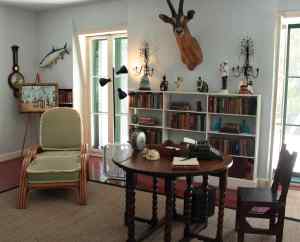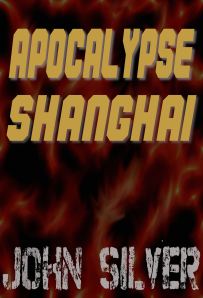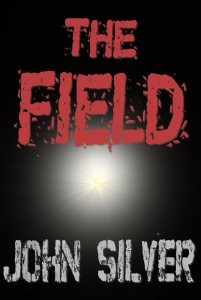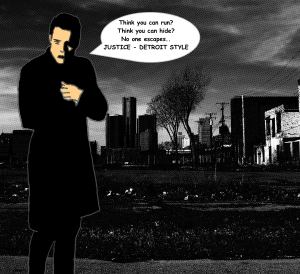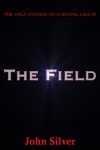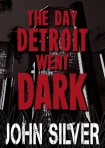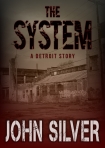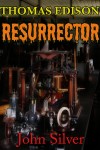Write Your Novel Like You’re Making a Movie Part 7
Post Production
Once a film is shot the producers, director and editor are left with a stack of memory cards or cans of film. Your cans of film are your first and hopefully second draft of your novel. Now it’s time to stitch everything together as perfectly as possible. This means crafting your scenes so they flow logically and seamlessly into each other. It means placing your plot points and yes/no reversals in their proper strategic places. It means having your ending go off like a fireworks show.
You are really playing the role of the film editor. Your work in this phase should be easier than the previous production and pre-production tasks. All of the heavy lifting is done. Your hard work is now paying off resulting in a polished, well executed and professional manuscript (and cover). From the blocking and lighting process your scenes have a unique feel to them that other writers may try to emulate but will only be able to approximate. You have not only defined the tone, color and tempo of your novel but now have a recognizable style. Your emerging style, or voice, is now distinct from other writers.
Do not over-edit your manuscript. There’s a difference between polished and slick. Polished is professional, slick is contrived. So where do you stop? This is where a checklist comes in handy. Here’s a basic one I use:
- Do your scenes flow evenly and logically from one to another?
- Does your manuscript adhere to the three-act structure?
- Are the first act plot points located in the right spots and in the right order?
- Does your second act contain true yes/no reversals opposed to being sloppy filler to get to the third act?
- Does your third act knock it out of the park?
- Is your book cover professional and competitive with other covers in your genre?
If you can honestly answer yes to the checklist questions then you have written a pretty good book that people will want to read. Now it’s time to get it into readers hands. For more on that, check out the April 15, 2012 blog post eBooks: Five Bucks Max for a analysis of traditional publishing vs. self-publishing.
This is the final post in the Write Your Novel Like You’re Making a Movie series. As you can tell, we like movies, long and short, pro and amateur, big budget extravaganzas and micro-budget shorts. We will be extending an invitation to filmmakers in May to shoot scenes or book trailers from the John Silver books and are working out the details now.
Hemingway House Key West
It was hot but a good hot with the humidity tempered by the constant Gulf of Mexico breeze. We walked down Duval, cut over on Olivia Street to Whitehead and there it was- Hemingway’s house. We paid the thirteen dollar admission and walked through the dense grounds toward the porch and the front door. Where Barb had the beaches on her mind, secrets be told, this was the major reason I wanted to visit Key West.
The house, bought for $8,000 in 1931, was a wedding gift to Hemingway and his second wife Pauline, purchased by Pauline’s uncle Gus. The tropical grounds are loaded with polydactyl cats (cats with six or seven toes). I asked a lady who worked on the grounds if the cats were descendants from original cats from Hemingway’s time and she said no.
The Hemingway house adopts and cares for polydactyl cats. Most are unrelated. The lady did say that Hemingway was very superstitious and highly accident prone. Polydactyl cats were believed to be good luck charms, somewhat akin to four leaf clovers, so Hemingway hedged his bets and collected them. The cats were popular on ships that passed through the keys. The first cat I played with was named Truman Capote.
The house interior has a funky, classic retro ambience, somewhere between Spanish and Victorian. The interior is dark, still and cool.
What I was really interested in (and inspired by) was Hemingway’s study. Just being in proximity of the space where Hemingway worked on A Farewell to Arms and The Short Happy Life of Francis Macomber was deeply thrilling. When I was a freshman in college (many years ago) an English professor gave me a hardcover copy of The Nick Adams Stories as a birthday present and I’ve been a Hemingway fan ever since. That’s were I learned, among many other things, to use plain descriptive language and to use only “he said” or “she said” for dialog and not atrocities like “she exclaimed enthusiastically”. Here’s a couple of shots of the study:
We live in an age of lowest common denominator reality shows, comic book movies passed off as art and sub-par IQ sitcoms. A lot of people visited Hemingway’s house when we were there. It’s enormously encouraging that people still go out of their way to visit the house of one of the greatest writers of the Twentieth Century.
Write Your Novel Like You’re Making a Movie Part 6
Production
The detailed outline is complete including the major plot points and yes/no reversals, the locations scouted (either literally or virtually), a storyboard is created and and your book cover is complete or near completion. The pre-production work is done and now it’s time to sit down and write your novel. If you’re like me, it’s been driving you crazy not to just sit down and write, but all the pre-planning will pay off in the final product.
Scenes are written from your outline and the more detailed the outline, the more vivid your scenes. There are some film production procedures and roles you can follow that will make your scenes resonate. These are tools that you can utilize to develop your style and, if you want to look at it this way (without sounding to corporate), your brand as a writer.
There are four cinematic entities I try to exploit, blocking, cinematography, lighting and shooting style. What is blocking? Blocking is where the director, along with the cinematographer and lighting director, set up a scene and walk the actors through it. It’s like a dress rehearsal to see what works, and what doesn’t. Approach your scenes this way by writing a sketch. Block them out. The scene’s motion, flow, ambience, effect and tone are refined this way. The blocking process gets the scene “just right” before it’s shot. You can do the same with your scenes before you commit to them. If something doesn’t feel right to the director (or you, the author) tinker with the scene via the blocking process until it is “just right”. This may entail writing your scene from different POVs and angles.
As an author, what is the overall tone and feel of your novel? Is it dark and film noirish? This influences how the light and shadows are used (the lighting director) and the overall look of the film (the cinematographer). It affects camera angle, depth of field (what’s in focus and what’s not) and the overall impression the director wants to make on the audience. Same with your book.
Is your book an action thriller? Then it might have full spectrum colorization with a lot of hand held camera scenes that imply realism and action. You are the director guiding the cinematography, light and shooting style, only you are doing it with words.
Block your scenes from different angles (POVs), lighting and shooting styles. Use whatever works for you and again, feels “just right”. It takes extra time, but your scenes will flow with an unexpected resonance and will integrate well with the overall tone of your book.
Next, post-production.
Write Your Novel Like You’re Making a Movie Part 5
Pre-production Storyboarding
Storyboarding is a graphical representation of a scene from a camera’s viewpoint. Why bother with a storyboard? Creating a storyboard will quickly illustrate what’s essential and interesting in your scene and what’s extraneous or boring. If you’re writing a scene that seems to drag and is highly narrative, bust out a quick storyboard with dialog and see what to cut. Just like in the world of filmmaking, a lot of your scenes will (and should) wind up on the (virtual) cutting room floor.
When I was writing the opening scenes of The Day Detroit Went Dark I was into the manuscript about fifteen pages when I thought it started to drag. I went back to the outline and re-examined the first few sequences. It was apparent there wasn’t enough action. I drew a storyboard of the first chapter, cutting out the non-action fluff, then wrote the scenes from that. I wound up with about ninety percent action and ten percent glue to bind the scenes together. Bottom line? Storyboards work.
Write Your Novel Like You’re Making a Movie Part 4
More Pre-production
By now your outline, locations, plot and character descriptions should be solid, if not locked down. It’s time to shift to the art director’s role. In the filmmaking world, an art director is responsible for the sets, wardrobe and countless other visuals. As an author, your role as the art director is to conceive and possibly produce, a stunning cover for your novel. People are primarily visual and the first thing they do is judge a book by its cover.
Here’ s a cover checklist:
- is it an eye grabber?
- does it convey the theme, tone or book plot?
- is it brand recognizable?
- does it appear professionally produce?
If you answer no to any of these questions, you’re cover’s in trouble. Look on Amazon or Barnes & Noble for covers in the genre you’re working in. Which ones catch your eye and why? Were they compelling enough for you to click on the book take a closer look? If it did, the author and/or cover artist did an effective job.
Also take a look at the home-brew, low budget low-thought covers. Would consider wasting time clicking on it to take a look inside, let alone thinking about buying it? I wouldn’t. If the cover is low quality, then so is the text.
There are plenty of cover artists willing and eager to work with you to produce a compelling cover for your book. I’ve used Coverlure.com in the past and they do great work. If you want to produce covers yourself, one way to go is to use GIMP, the free, open source Photoshop alternative. There are many good tutorials in YouTube about creating book covers that you can learn from.
Here are two covers I produced with GIMP.
Your covers don’t have to be fancy, just attractive. If you decide to create your own covers, make sure it’s on par with the professional looking covers. The competition is stiff.
Write Your Novel Like You’re Making a Movie Part 3
Pre-production
Now that the high concept, logline, genre and trusted reader acid tests are performed, it’s time to enter the pre-production phase. The first thing to do is to create a schedule. As in any business, time is money. As a writer, every day you spend on a project is a day lost on another. Be aggressive and set deadlines.
In movie making there are a lot of pre-production roles to play, all requiring different talents and specialties. Guess what- as an author you have to fill most of these roles yourself. First and foremost, you are the producer and director and responsible for everything on the creative side. You will also be the location manager, art director and maybe the storyboard artist.
Now is the time to start outlining your novel in detail. There are several ways to do this. One way is utilizing the old journalism paradigm- who, what, why, when and where.
Who – is your main character?
What – is their predicament and goal?
Why – is someone trying to stop the main character from attaining the goal?
When – does the story happen, past, present or future?
Where – does the story take place?
Answering these questions will help clarify your plot and character development.
Make sure you fit everything into the three act structure, just like in a screenplay. If you aren’t intimately familiar with the three act structure, Act I plot points, Act II yes/no reversals and big action and resolution in Act III, consider picking up a copy of Contour by Mariner Software. Contour is a screenplay outlining tool. It’s rigorous to the extreme but if you stick with it you will know the three act structure inside and out. It’s relatively inexpensive and worth buying.
Once your outline is fleshed out the next role you will play is the location manager. In the movie world the location manager scouts locations along with discovering potential interiors and exteriors for shooting scenes, among many other duties. Where is your novel located? Detroit? New York City? Paris? A small midwestern town? It’s important that you, the location manager, visit the locales and absorb every little detail you can.
What if you live in Cleveland and your novel is set in Los Angeles and there is no way you can justify a trip to the west coast? Visit it virtually. My second novel, Reckoning in Escobara, is located in and around Juarez, Mexico. I spent hours walking the streets and back alleys of Juarez using Google Earth. One reader asked me how much time I spent in Juarez and recognized a lot of areas that only residents knew about. Taking your role as location manager seriously and it will pay off in your novel.
Next, more pre-production…
Write Your Novel Like You’re Making a Movie Part 2
More Development
We now have two high concepts (The Carnival Barker and Aquaphobia) and two viable loglines. Now what? In the film development stage an outline is produced, a synopsis or treatment is created and a screenplay is written and re-written. For novel writers, the outline phase is moved to pre-production. What’s left for you to do in the development phase is to determine your target audience and asses your book’s chances of success in the appropriate market.
What genre does your new book idea fall into? Thriller? Romance? YA? Figure that out in a hurry and be hesitant to write in a genre you don’t really like. You’ll come off as a phony and readers will see through you immediately.
Run your high concepts and loglines by some of your honest, trusted friends and readers. This is the acid test. Look at their faces, especially their eyes. If more than one person’s eyes glaze over when you pitch a concept and logline, you’ve got a dud on your hands. Dump it, try another one or start over. If their faces brighten and they say that are looking forward to reading it, then you may have a winner.
This is similar but in much less detail the kind of work a film studio performs before they pull the pre-production trigger. The studio’s goal is to maximize the number of butts in theatre seats, eyes glued to the silver screen. As an author, your goal is to maximize the number of eyeballs on a eReader or printed page. Once you’ve done the development work, now is the time to approach your agent, if you work with one. If you’re an independent, then you’re ready to move on to the pre-production phase.
More on this to come…
Write Your Novel Like You’re Making a Movie
Have an idea for writing a novel but don’t know where to start? Writing a novel is a lot like making a movie, only not as rigid. Movie making consists of four basic elements: development, pre-production, production and post-production. Notice three out of the four elements contain the word production? At each phase, something is being created and assembled. Produced. The development phase should really be called pre-production development.
Development
The first step in your writing journey is the notion of high concept. One aspect of the high concept approach explores “what if” scenarios. High Concept 1: What if a person, working week in week out at a job serving the public woke up one morning and discovered they were the last person alive on earth? Would they welcome it or hate it?
High Concept 2: What if someone who has an overwhelming fear of the ocean falls in the Pacific and instantly grows gills? Would he or she adapt to their new world or die? These are high concept ideas and you should be able to bang these out all day. Sure, most of them will be mediocre to bad, but the law of averages says that if you create enough of them, chances are you’ll produce a gem. There’s that word again, “produce”.
The high concept is the very real first step in the film development process. The same goes for novels. If this seems foreign or difficult for you to do, I recommend the eBook Your Idea Machine by screenwriter William C. Martel. You will find guidance on “what if” scenarios and many more idea generating techniques. I have all of his screenwriting blue books and have leaned tons from them, even though I don’t write screenplays.
Once you’ve locked in your high concept, it’s time to start working on a logline. Your logline should be only one sentence long, and in rare cases, two. Loglines are a lot harder to produce than you think, but you have something solid to work from: your high concept. For High Concept 1 a logline could be “A barker wakes one morning to find the carnival gone and soon discovers he’s the last person alive on earth.” We could call this novel “The Carnival Barker”. For High Concept 2 a logline could read “A tipsy woman deathly afraid of water falls off a pier into the Pacific and instantly grows gills and attracts predators.” We could call this book Aquaphobia.
Armed with your high concept and logline you’re ready to make an elevator pitch to producers or editors. More on development in the next installment.
-
Archives
- March 2015 (1)
- January 2015 (1)
- December 2014 (6)
- November 2014 (2)
- October 2014 (4)
- September 2014 (2)
- August 2014 (1)
- April 2014 (1)
- March 2014 (1)
- February 2014 (4)
- January 2014 (6)
- December 2013 (7)
-
Categories
- Art
- audiobooks
- black friday violence
- Book Reviews
- Books
- bourbon
- cinematography
- Comics
- Creative Process
- Detroit
- Detroit crime
- Detroit Poverty
- digital photography
- education
- electronic music
- Film making
- Graphic Novels
- HDR photography
- horror
- Internet Radio
- jukebox musicals
- media
- Modern Culture
- Movie Reviews
- Movie Trailers
- Movies
- music
- News
- oil painting
- On Writing
- pencil drawing
- Performances
- photography
- Radio
- Rescue Dogs
- retro
- Reviews
- Science
- stage plays
- Tech
- Tech thrillers
- Technology
- The System Podcast
- Thomas Edison
- Thrillers
- Titanic
- Titanic exhibition
- TV
- TV Reviews
- TV Series
- Uncategorized
- Winter 2014
- World War II
- Writing
- Writing Fiction
-
RSS
Entries RSS
Comments RSS



